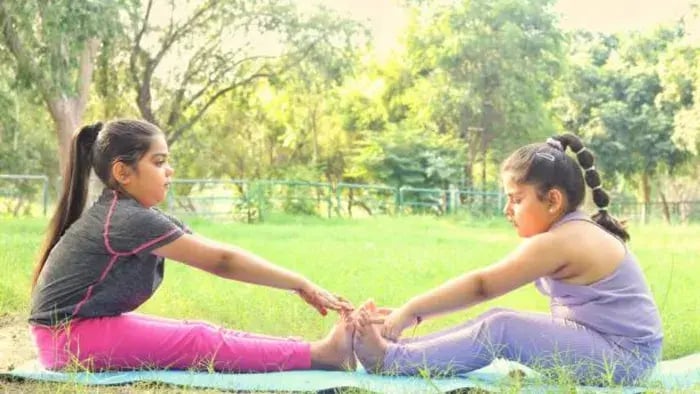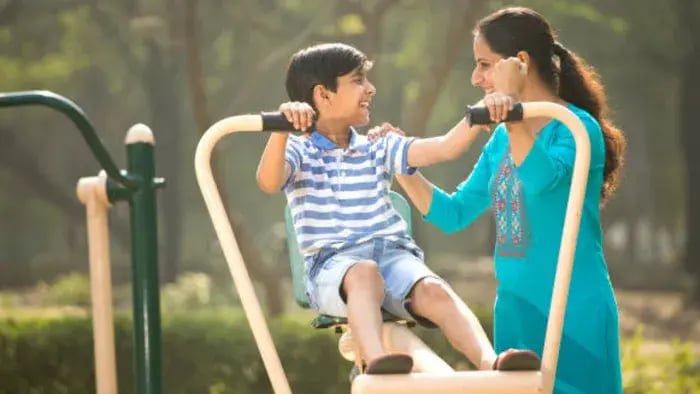- Turn Your Home into a Positive Wellness Space
- Make Movement a Joy, Not a Chore
- Shift Meals One Change at a Time
- Be the Example, Not Just the Guide
- Celebrate Strength, Stamina, and Participation
- Balance Screen Time with Real-Life Activity and Rest
- Normalize Occasional Treats and Food Freedom
Introduction

Helping a child build healthier habits is about how they feel during the process. Many children who carry extra weight already face teasing, low confidence or social discomfort, and the last thing they need is more pressure. Creating a space where fitness feels fun, achievable and shame-free makes all the difference.
Simple routines like walking together, dancing indoors or adding colourful fruits and homemade snacks to the plate can start to shape a healthier path. Rather than focusing on numbers or looks, the goal is to build energy, confidence and a sense of control over their own well-being. Lifestyle changes work best when they’re steady and supported, not rushed or forced.
A balanced child-friendly approach allows kids to move at their own pace and grow to love how it makes them feel. Whether it’s stretching before school, taking the stairs or choosing coconut water over soda, every small step counts. With patience, encouragement and the right tools, it becomes easier for kids to feel strong in their bodies without fear or judgment. That’s the mindset shift that supports lasting health.
7 Supportive Ways to Improve Fitness and Lifestyle Habits for Obese Kids Without Shame

Conversations about fitness can often be tricky, especially when it comes to children who are overweight. Many kids are already aware of their size and may even feel judged, teased, or left out. That’s why parents need to lead these changes gently, with a focus on support and understanding rather than appearance or numbers on a scale.
Turn Your Home into a Positive Wellness Space
Create an environment where food isn’t labeled “bad” and bodies aren’t judged. According to a study published in J Nat Sci Biol Med. 2015, avoid using words like “fat,” “lazy,” or “cheat day.” Instead, speak about how food helps us feel stronger or more focused. Let your child see that the goal is energy and wellness—not shrinking to a size.
Make Movement a Joy, Not a Chore
As per a study published in Turk Pediatri Ars. 2020, structured exercise can feel boring or intimidating to a child. Make activity a natural part of the day through dancing to music, helping in the garden, playing catch, or riding a cycle. Celebrate small milestones like “we played for 20 minutes without stopping!” to build their motivation.
Shift Meals One Change at a Time
According to the Centers for Disease Control and Prevention (CDC), swap refined snacks with homemade foods gradually. Add pulses to dosas, use paneer instead of processed cheese, and sneak veggies into parathas. Let your child help in cooking, so they learn to enjoy the food they’re eating instead of fearing it. Keep favorites in rotation but with healthier tweaks.
Be the Example, Not Just the Guide
According to World Health Organization (WHO), whether it’s drinking more water, avoiding late-night snacks, or prioritizing a walk after dinner, your consistency matters more than your words. Share how you feel more active or happier after these routines, so it becomes a shared journey rather than a one-sided instruction.
Celebrate Strength, Stamina, and Participation
According to the Centers for Disease Control and Prevention (CDC), encourage achievements like lifting a heavier schoolbag, walking farther than before, or trying a new yoga pose. Compliment courage, creativity, and participation. These words stay longer than comments about weight and can help shape a positive relationship with fitness.
Balance Screen Time with Real-Life Activity and Rest
According to a study conducted by, Obesity Prevention through Physical Activity in
School-Age Children and Adolescents, too much screen time can affect mood, sleep, and hunger. Set family hours without devices, like after dinner or early morning. Replace scrolling time with outdoor play, storytelling, or light stretching together. Better sleep alone can reduce stress-related cravings and mood swings.
Normalize Occasional Treats and Food Freedom
As per the Dietary Guidelines for Indians-2024, treats aren’t the enemy; they just need context. Allow sweets, fries, or packaged snacks occasionally without drama. Talk to your child about why daily intake of such items isn’t helpful, but show them how it’s okay to enjoy something on weekends or special days.
Conclusion

Helping an overweight child become healthier doesn’t mean making them feel broken or behind. The real transformation happens when a child starts feeling hopeful, proud, and supported. Your calm, caring approach becomes the foundation for their self-worth, not just their physical health. And in that, every effort counts.
Her love for storytelling began with reading her grandfather’s speeches, where Tarishi saw the power of words in creating lasting memories. Combining her passions for food and writing, she has turned her life into a fulfilling path of sharing stories that celebrate flavours and how food brings communities together.
The views expressed are that of the expert alone.
The information provided in this content is for informational purposes only and should not be considered a substitute for professional medical advice, diagnosis, or treatment. Always seek the advice of your physician or another qualified healthcare provider before making any significant changes to your diet, exercise, or medication routines.
References
https://www.cdc.gov/healthy-weight-growth/tips-parents-caregivers/index.html
https://www.nin.res.in/dietaryguidelines/pdfjs/locale/DGI07052024P.pdf
https://www.cdc.gov/obesity/family-action/index.html
















